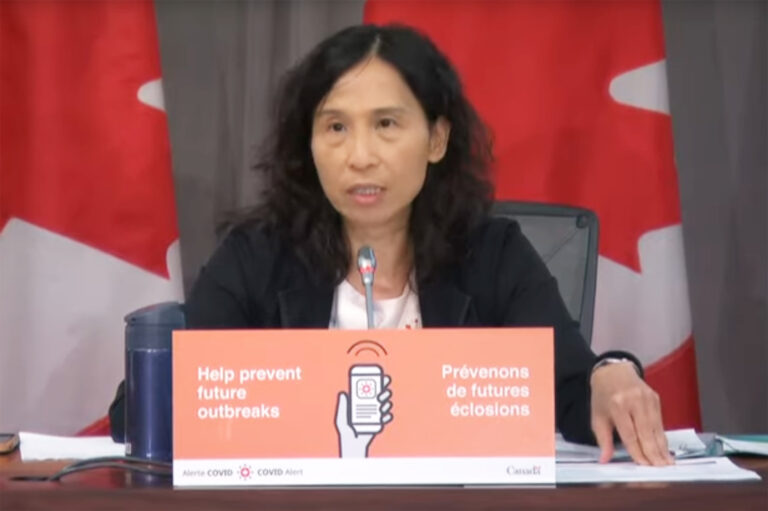
The federal government’s latest COVID-19 forecast shows Canada could have as many as 12,000 new daily cases by early January unless residents take significant measures to reduce the spread.
Dr. Theresa Tam, Canada’s chief medical health officer, said there’s been a lot of good news on the vaccine front, but the country’s short-term outlook hasn’t changed. She said residents will need to be vigilant over the holidays, and keep reducing their contacts to lower the spread.
“Knowing access to safe and effective vaccines for all Canadians is in sight might lead some to believe COVID-19 is no longer a problem, but the reality is very different,” Tam told reporters during a media briefing on Friday. “Canada and many countries around the world are still experiencing high infection rates.”
Canada has reported more than 440,000 total COVID-19 cases since the start of the outbreak. That number could rise to between 531,300 and 577,000 by Christmas.
Escalating cases numbers in long-term care facilities are the biggest concern. Around 50 facilities experienced COVID-19 outbreaks in August, but that number has climbed to around 350.
“Obviously, long-term care is a complex environment … and it’s difficult to ensure, I think, that every long-term care home is (monitored with) the same standards and rigour,” Tam said. “If you have community spread, it’s awfully difficult to keep it out of these homes.”
Canada is approaching 94 COVID-related deaths per day, the majority of which are linked to long-term care homes.
Rising case numbers in First Nations communities are also a concern. As of Dec. 7, Indigenous communities were reporting more than 5,550 total cases, 2,080 of which were active. Roughly 85 per cent of reported cases come from Saskatchewan, Alberta and Manitoba.
Federal Indigenous Services Minister Marc Miller said the government is working with First Nations leaders get the vaccine to those communities, but told reporters that planning was still in the early stages.
“Canadians expect our health delivery services to be fair,” Miller said. “We’re talking about people who are in a position of vulnerability.”
There was some good news. Canada’s long-term COVID forecast has improved as public health measures are implemented. The anticipated number of new cases for January is lower than it was two weeks ago, but government officials say it’s not moving quickly enough.
Health Minister Patty Hajdu and Intergovernmental Affairs Minister Dominic LeBlanc both told reporters the Canadians cannot afford to get careless over the holidays.
Although more than 440,000 people have tested positive for the virus, that accounts for just one per cent of Canada’s population. Both ministers said there are still a lot of vulnerable people who may catch it.
“We are not out of the woods yet,” Hajdu explained. “COVID-19 is still presenting a very clear danger to Canadians across the country. We know that the vaccine is an important part of the solution in stopping (the) spread and reducing deaths, but we have a lot of work to do together as a country in the next several months.”
LeBlanc also announced that the federal government would pay the entire cost of transporting the COVID-19 vaccine to the 14 distribution centres set up by the provinces. He said Canadians expect the federal and provincial governments to work together to roll out the vaccine as quickly and safely as possible.
“This is a team Canada effort in the coming weeks as we focus on the delivery of vaccines,” he said. “We know how important this delivery is.”
There are currently more than 73,000 active COVID-19 cases in Canada. That’s up from 52,000 active cases just three weeks ago.
An average of 6,500 new cases have been reported per day during the second wave. That exceeds the average total of the first wave this spring. About 100,000 cases have been reported across the country over the last three weeks. The non-Atlantic provinces are responsible for most of the growth.
Saskatchewan, Manitoba, and Alberta continue to have the highest infection rates out of any Canadian province. Those numbers are driven largely by increases in urban centres.
